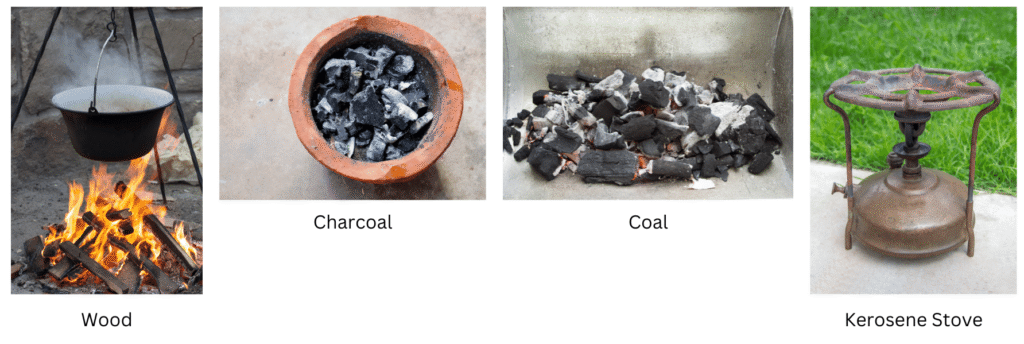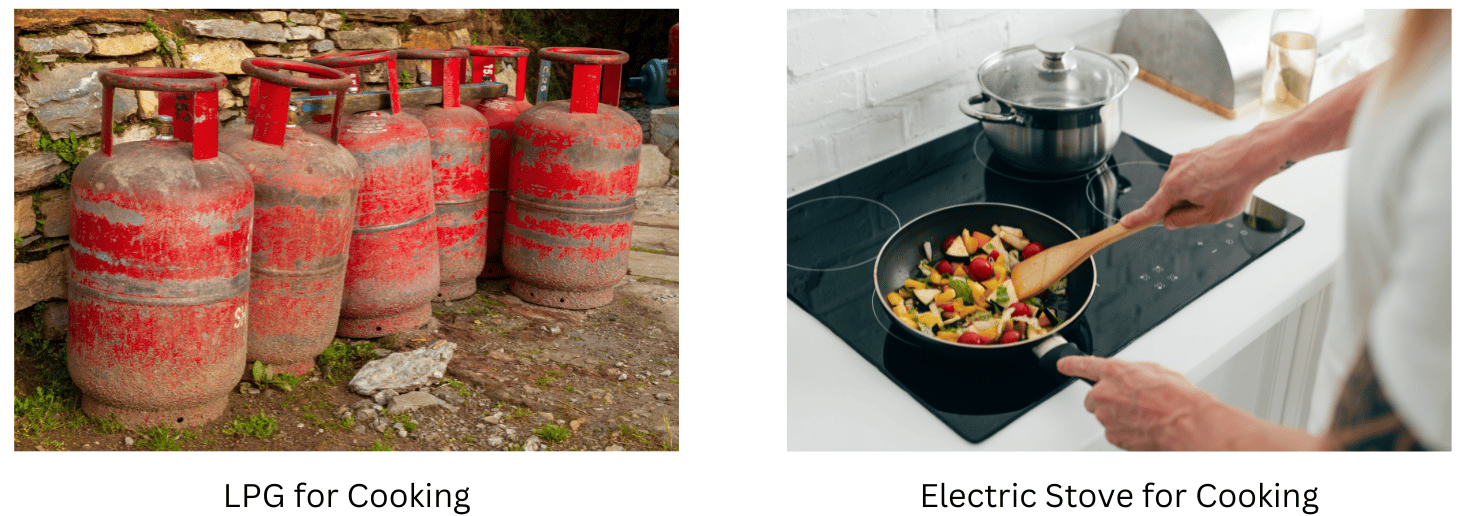4. Collect information about the types of fuels used for cooking in your area. Discuss with your teachers/parents/others which fuels are less polluting and why.
Answer:
Different fuels used for cooking in my area are wood, charcoal, coal, grass, kerosene, biogas, LPG, electricity.
Wood: More than 60% rural households still use firewood for cooking. Burning of wood releases a lot of greenhouse gases and poisonous pollutants into the air such as carbon monoxide.
Charcoal: Charcoal is the result of heating wood in the absence of oxygen. Burning of charcoal also releases a lot of greenhouse gases and poisonous gases like carbon monoxide into the environment.
Coal: Coal is a fossil fuel and burning it releases huge amounts of pollutants and greenhouse gases, which are very harmful for the environment.
Grass: Grass, husk, leaves etc are still used in certain rural areas for cooking purposes. This is another huge source of pollution.
Kerosene: Kerosene is a flammable liquid derived from petroleum and is used as a fuel in households which do not have access to LPG and electricity.
These fuels for cooking are shown below:

The less polluting or clean fuels among them are:
Biogas: Burning of biogas emits much less amounts of greenhouse gases like methane, carbon dioxide etc and other contaminants into the atmosphere, which reduces pollution. Secondly, biogas can easily be produced from industrial and domestic organic waste which otherwise would be wasted. This also reduces pollution.
LPG: Burning of LPG results in much less emission than many other types of fuels.
Electricity: The use of electricity for cooking does not involve any emissions and is therefore not harmful to the environment. These clean fuels are shown below:

“Collect information about the types of fuels used for cooking in your area. Discuss with your teachers/parents/others which fuels are less polluting and why.” – Solved.
Related Links:
Solution to Extended Learning – Activities and Projects Question 1
Solution to Extended Learning – Activities and Projects Question 2
Solution to Extended Learning – Activities and Projects Question 3
Solution to Activity 5.1
Solution to Activity 5.2
Solution to Activity 5.3
Solution to Activity 5.4
Solution to Activity 5.5
Solution to Activity 5.6
Solution to Activity 5.7
Solution to Activity 5.8
Solutions to Chapter 5 Physical and Chemical Changes


